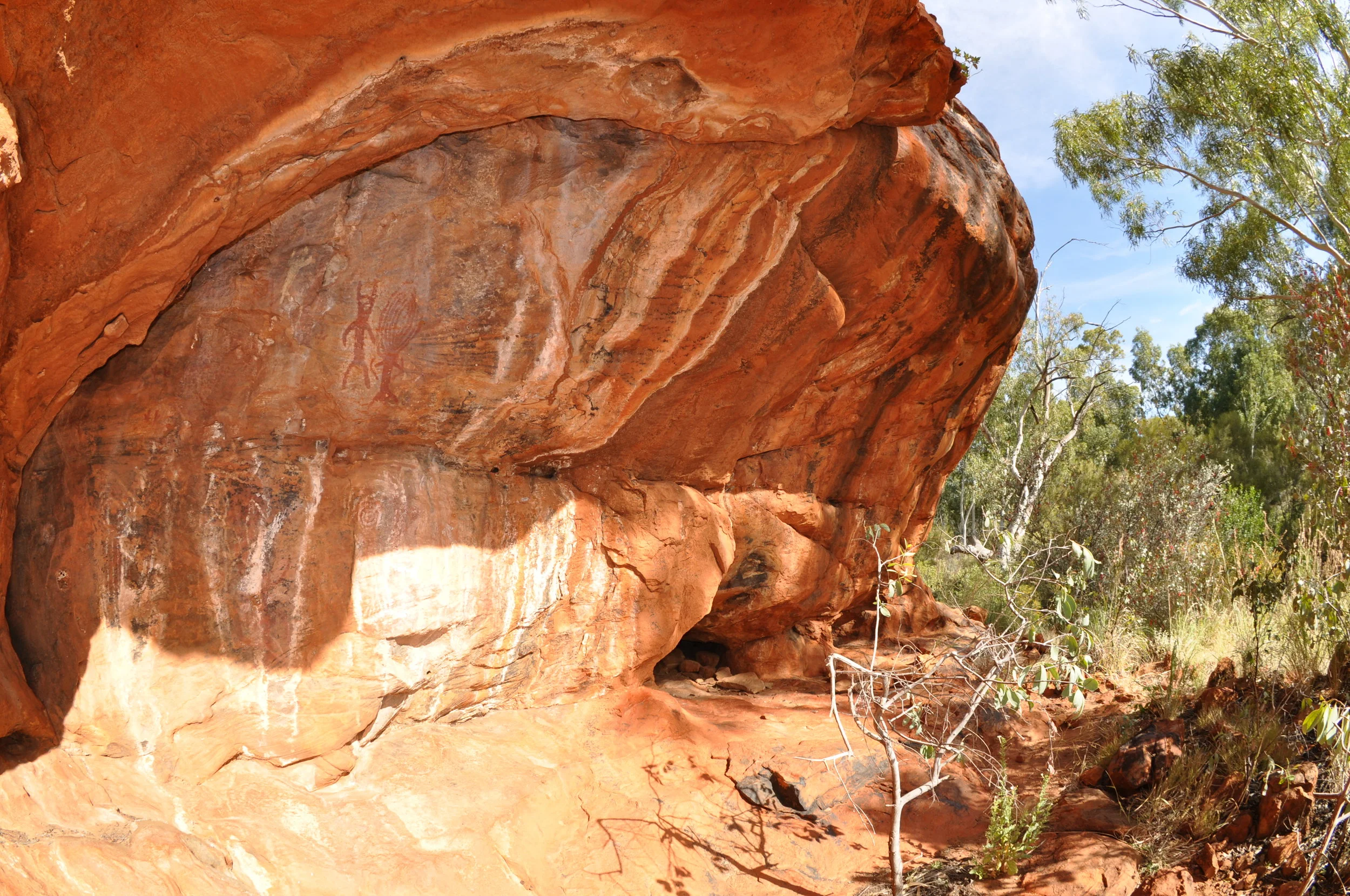Rock Art
While many travellers on the Canning Stock Route (CSR) will be familiar with Western Desert acrylic paintings, few appreciate that ‘dynamic’ rock art is also a feature of Western Desert society. This art includes both pigment art (painting, drawing and some stencilling) and engravings (where the rock surface has been altered by pecking, scoring and abrading). While some of this art was produced relatively recently, some is also very ancient. Custodial knowledge about the role of the art can provide new perspectives about the societies that produced it and how and why this art was produced. The rock art of the CSR shows high levels of diversity in its style. It is complex, diverse and varies over space.
Ancestors and Creators
Western Desert people believe the painted art of the desert is made by their ancestors, whereas the engraved images are believed to have been left there by creator beings in the Dreaming (jukurrpa). Engravings include large human figures (up to 3 metres tall) with decorated bodies, Thylacines (the now extinct Tasmanian tiger), owl-shaped Archaic Faces and a wide range of figurative forms such as the kangaroo, bustard and emu. There is also tracks of birds and animals, circles and other geometric motifs. The different styles of the engravings and their very different levels of weathering and discolouration indicate this rock art was produced over many thousands of years. CSR paintings represent both everyday themes (such as plants and animals), and describe ancestral stories from the jukurrpa which cover vast tracks of Country.
Recording, dating and analysis of the rock art
The Canning Stock Route (CSR) provides a north-south transect through three desert systems and crosses numerous dialect groups. The rock art from the south (near Wiluna) compared to that in the centre near the Durba Hills (Jilukurru) and then to the north near Lake Gregory (Paruku) shows both similarities and some significant differences. We are beginning to understanding the cultural, economic and ecological causes of diversity in this art.
Radiocarbon dates show that the most recent phase of painted art was produced during the last 1,000 years with a previous phase dating back to about 5,000 years ago. Recent work around Lake Gregory at the top of the CSR shows that people lived there when this freshwater lake was 10 times larger that it is today — 50,000 years ago right up until the present. The concept that people have been signalling their identity to each other and relaying their Country and its creation through tens of thousands of years is breathtaking.


